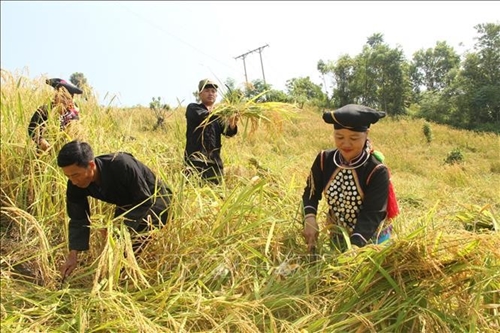The survey’s findings will be an important foundation for designing socio-economic development policy for the ethnic-minority-inhabited and mountainous areas in the 2026-2030 period, the GSO said.
    |
 |
|
Si La people in Muong Te district, Northern Lai Chau province harvest rice. |
Highlighting the importance of the survey, GSO Deputy General Director Nguyen Trung Tien said that information on population, housing, marriage, education, and living conditions of the communities will be collected to make statistical indicators under the national statistical indicator system and the statistical indicator system on ethnic minority affairs, used for the building of socio-economic development policies for ethnic minority areas in the 2026 - 2030 period, and the updating of information and data on ethnic minorities in Vietnam.
The survey will be carried out from July 1 to August 15 in 54 centrally-run cities and provinces, using direct information collection method, he added.
Tien said that due to a change in the criteria for defining survey areas, this time the survey will cover 472 districts, more than the 437 in the 2019 survey. The total number of sampled enumeration areas will increase to 14,928 from 14,660 in 2019, the official said, adding that the GSO will strengthen the application of information technology for the work.
He underlined that as the survey areas are mostly in far-flung and mountainous areas, the selection and training of the staff in the work have been carefully carried out by localities, while communications on the survey have been promoted.
According to the GSP, preparations for the survey have so far been completed.
Previously, the GSO and the Government Committee for Ethnic Minority Affairs conducted two such surveys in 2015 and 2019.
Source: VNA